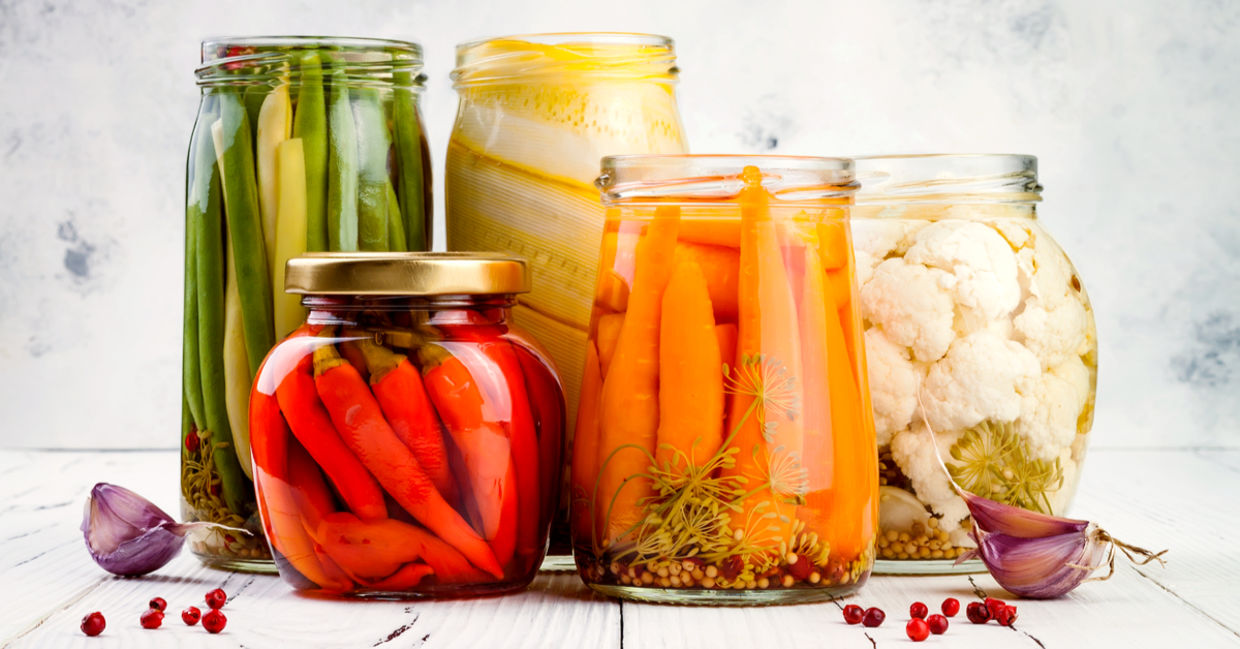
(zarzamora / Shutterstock.com)
If the idea of turning remnants into food that lasts sounds appealing to you, then you’ll be pleased to know you can turn food leftovers into appetizing new meals. Making the most of your food prep will not only save you time, but it will also boost your budget. At the same time, you will be contributing to a bigger purpose such as climate change because, by safely reusing uneaten food, you’ll be diverting food waste from landfills.
Here are five of the most common ways in which you can start preserving food. All you need is a kitchen, some basic utensils and the will to follow a few simple steps.
Freezing
Freezing food has been used for hundreds of years as a food preservation method because it significantly slows down the bacteria and yeast growth process. The availability of electricity plus the creation of home appliances in the last couple of centuries, have made this method one of the easiest and most accessible ones, according to The Spruce, a publication specialized in home ideas. All you need is a freezer, reusable bags or glass, silicone or stainless steel storage containers.
Keep in mind that frozen food can generally last up to three months keeping its original taste and texture. So make sure to use the first-in, first-out rule: label your food with the storage date, and put the older foods on top so that you use them first.
Freezing food is one of the easiest ways to preserve it and reduce #foodwaste. You can freeze leftovers, excess produce, and bulk meals like soups and chilis. It’s a great way to ensure you always have a healthy, home-cooked meal available.
— Ryerson Sustainability (@rsustainability) November 15, 2019
For more tips: https://t.co/hvlhmWzEpK pic.twitter.com/s89HfEi41H
To avoid freezer burn, there are three things to pay attention to, according to Dummies, a website with expert hacks: wrap food tightly to reduce air exposure, keep the freezer closed as much as possible to avoid changing temperatures, and try not to overfill it to allow good air circulation.
Drying
Dehydrating or drying is a specially useful method for seasonal foods that you might want to use throughout the rest of the year. Another benefit is that it compacts bulk food, as The Good Trade, a website on sustainable living, details.
Almost anything you can think of can be dehydrated, and although it requires a bigger learning curve, the results are not only delicious, but also long lasting. With the right packaging, dehydrated food can last for years. Remember that the key here is to keep storage food moisture-free.
Let's talk about drying herbs, veggies, and fruits on #GardeningTipsTuesday. Drying or dehydrating is the process of reducing the food's moisture to preserve the food. The 3 most common ways to dehydrate foods are oven drying, electric dehydrating, and air drying. @henhere pic.twitter.com/7Fqq1DtUc5
— Halton Food (@HaltonFood) August 31, 2021
What do you need? A dehydrator (usually electrical) , a drying rack, a knife, pots, and reusable jars or storage containers.
Canning
Canning is the process of sealing food and using heat to destroy unwanted microorganisms that may cause its spoilage. The idea is to form a vacuum as the jar cools and seals.
Learn how to preserve food freshness year-round at our Canning and Preserving program, August 15 8am-10am. Walk away with the knowledge you need to safely preserve your food, plus a starter kit for water bath canning at home! Visit https://t.co/40P3Hjq14j for more information! pic.twitter.com/lEm6FFn9Uc
— Trees For Tomorrow (@Trees4Tomorrow) July 12, 2021
According to The Good Trade, the two main types of canning — and the safest — are water bath canning, used for high-acid foods like fruits and tomatoes, and pressure canning, used for low-acid foods such as meats, fish, and vegetables.
Canned food is a great option to preserve food for up to one year. Just make sure to stay safe by using appropriate tools and carefully following the necessary steps.
Fermenting
Did you know that fermentation is actually a form of food spoilage that controls microorganisms? There’s nothing to worry about, because doing it properly not only gives food a unique flavour, it also protects it from unwanted organisms, The Spruce points out.
Researchers have found that a diet rich in #fermentedfood such as yogurt, kombucha tea, kimchi and other fermented vegetables can boost the diversity of #gutmicrobes and decrease molecular signs of inflammation. Via @MicrobiomePost https://t.co/DLDbakRbZF
— Gut Microbiota NW (@GutMicrobiotaWW) September 28, 2021
There are even more benefits, since consuming fermented foods like sauerkraut and kimchi can contribute to a healthier flora, which is good for the human gut.
Fermented foods can be kept for months and even years, when left unopened, The Good Trade explains. The key is to pay attention to the process to make sure you are fermenting food safely.
Pickling
Last but not least, pickling is one of the most well-known ways of preserving food. And it is no surprise given how easy it is to achieve. A jar, a knife and a cutting board is all you’ll need to extend the life of any kind of vegetable. The use of vinegar, salt and spices gives them a distinctive salty, sour taste that so many adore.
Want to waste less food? Preserve food in salt or sugar. To prevent waste, dry or dehydrate your food. Pickling is another way to preserve and reduce food waste, and you can pickle any veggie. If you can’t eat all the vegetables you have, try canning them. ???????? #Day24 #30EcoWays pic.twitter.com/ohzx7KS91R
— Green Philly (@greenphillyblog) April 24, 2020
If you are looking for an easy way to start preserving food, quick pickling is definitely beginner- friendly. Besides, homemade pickles can be enjoyed almost immediately and vegetables like cucumbers, carrots and onions can be preserved for up to four weeks.







